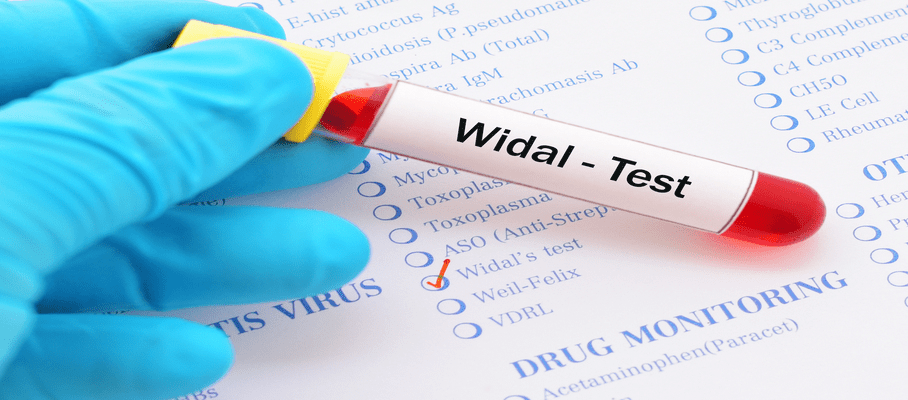Preventive Healthcare
Throat Infection - What It Is, Symptoms, Causes and Risk Factors

Table of Contents
What is a Throat Infection?
A throat infection is a common ailment that leads to discomfort in your throat. It can cause your throat to feel sore and irritated. It can also make it difficult to swallow and talk. These infections can be bacterial or viral in nature. Fortunately, however, most infections are mild and usually resolve in a few days.
A sore throat can be caused by a viral infection such as the common cold or flu. In most cases, a viral infection is mild. It resolves on its own in a few days without the need for treatment.
Occasionally, sore throat can be caused due to a bacterial infection. A common bacterial infection is strep throat. Severe bacterial Infections require medical care and treatment with antibiotics.
Read on to know all about the causes, symptoms, and possible treatment options for a throat infection.
Symptoms of Throat Infection/Sore Throat
A throat infection can present itself with many different symptoms. The symptoms can vary in intensity from mild to severe depending on the type of infection. The common symptoms include
- A sore throat with pain and irritation.
- Difficulty in talking and a hoarse voice.
- Painful swallowing while drinking and eating.
- Swollen glands beneath the jaw that are painful to touch.
- Red and inflamed tonsils. There may be white patches on the tonsils.
- Depending on the infection, you may also experience fever, cough, body aches, or nausea.
Types of Throat Infection
Throat infections are commonly classified into two main types: viral and bacterial. Each type has distinct causes and symptoms, affecting people of different age groups and severity levels.
Viral Throat Infections
This is the most frequent type of throat infection. The common cold, caused by rhinovirus, typically leads to a mild sore throat accompanied by cough, congestion, and a runny nose. Influenza, or the flu, causes more intense symptoms such as high fever, body aches, fatigue, and sore throat. Mononucleosis, also called the “kissing disease,” is seen mostly in teenagers and young adults, leading to severe fatigue, swollen lymph nodes, and enlarged tonsils. COVID-19 can begin with a sore throat and may also include symptoms like loss of taste or smell and breathing difficulties. Croup is another viral infection that mostly affects young children, resulting in a barking cough and noisy breathing.
Bacterial Throat Infections
This type of throat infection includes strep throat, caused by Group A Streptococcus bacteria. It leads to a sudden, intense sore throat, fever, and white patches on the tonsils, usually without a cough. Peritonsillar abscess is a rare complication of tonsillitis, presenting with severe one-sided throat pain and swelling. Diphtheria, though rare due to vaccination, is a serious infection that causes a thick grey membrane in the throat and can block airways.
Causes of Throat Infection/Sore Throat
There are several reasons that can lead to a sore throat. Allergies and air pollution can irritate the lining of the throat and cause pain and inflammation. Injuries and strain in the throat muscles can lead to pain in your throat.
Throat pain can also occur due to pathogens infecting the body. Two of the most common causes of throat infections are viral and bacterial infections.
- Viral infections - A number of viral infections can cause sore throat. These include the common cold, flu, measles, chickenpox, and coronavirus (COVID-19)
- Bacterial Infections - A common bacterial illness that causes sore throat is streptococcus pyogenes. This causes strep throat.
Possible Risk Factors of Throat Infection
Age - Children and teenagers are more susceptible to throat infections. Their weak immune systems make them more likely to develop bacterial and viral illnesses.
Pollution and Allergies - Living in a polluted environment and exposure to dust, pollen, and other allergens can irritate the throat. This can lead to pain and irritation. Inflammation of the throat can also increase the risk of contracting bacterial and viral infections.
Exposure to Tobacco Smoke - Regular smoking and even secondhand smoke can irritate the lining of the throat. This can lead to throat pain. Over a period of time, tobacco products increase the risk of developing mouth and throat cancer.
Throat Infection Diagnosis
If you have a persistent sore throat, especially with a fever, it's important to see your doctor for an accurate throat infection diagnosis. Here's what you can expect during the evaluation:
Physical Exam
- Your doctor will examine your throat for redness, swelling, and white patches on the tonsils and feel for swollen lymph nodes in the neck.
- Signs of a viral infection include a runny nose, cough or hoarseness.
- A fever over 101°F (38.3°C), absence of cough and visible pus on the tonsils point to a bacterial cause.
Strep Testing
- If strep throat is suspected, your doctor may perform a rapid antigen detection test using a throat swab.
- A throat culture is the gold standard for diagnosing strep. The swab is sent to a lab to check for bacterial growth, with results in 24-48 hours.
Additional Tests
- Blood tests like a Complete Blood Count (CBC) may be ordered if you have a prolonged fever or other worrying symptoms.
- A monospot test can help diagnose mononucleosis if fatigue and swollen glands persist.
- If you've had a recent COVID-19 exposure or develop loss of taste/smell, your doctor may advise a PCR test.
Throat Infection Treatment
The treatment for throat infections depends on whether the cause is viral or bacterial. Here's a quick overview:
Viral Throat Infections
- Most viral throat infections are self-limiting and can be managed with rest, hydration and over-the-counter pain relievers like acetaminophen or ibuprofen.
- Antibiotics are not effective against viruses and should be avoided to prevent antibiotic resistance.
Bacterial Throat Infections
- Strep throat and other bacterial throat infections require a course of antibiotics, usually penicillin or amoxicillin, for 10 days.
- It's crucial to complete the entire course even if you start feeling better to prevent complications like rheumatic fever.
- Gargling with warm salt water is a proven throat infection home remedy that brings instant relief. You can also use throat lozenges for additional symptomatic relief.
Emergency Care
- A peritonsillar abscess is a medical emergency that requires prompt drainage of the pus pocket and intravenous antibiotics.
- If you're unable to swallow due to severe throat pain and swelling, you may need hospital admission for IV fluids to prevent dehydration.
Throat Infection Prevention
While not all sore throats can be avoided, you can help with throat infection prevention with these simple measures:
- Practice good hand hygiene by washing your hands frequently with soap and water. Avoid touching your nose and mouth.
- Don't share utensils, glasses or toothbrushes with others, especially if they are ill.
- Boost your immunity by eating a balanced diet, exercising regularly and getting enough sleep.
- Consider getting an annual flu shot and staying up to date with vaccinations to prevent these common viral infections that can cause sore throats.
- Avoid irritants like cigarette smoke and allergens that can aggravate throat discomfort.
When to See a Doctor?
Most throat infections resolve within a week with self-care measures. However, it's important to seek medical attention if you experience:
- Difficulty breathing or swallowing
- Drooling or muffled voice
- Fever over 101°F lasting more than 3 days
- Sore throat persisting beyond 7 days
- Tender, swollen lymph nodes in the neck
In children, warning signs include noisy or laboured breathing, excessive sleepiness and dehydration due to refusal to drink. Trust your instincts and err on the side of caution, especially for little ones.
Conclusion
Throat infections are a common ailment that can cause significant discomfort and disruption to daily life. By practising good hygiene, staying current with immunisations and being vigilant for red flag symptoms, you can protect yourself and your loved ones. If you have a persistent sore throat or are concerned about your symptoms, consider booking a throat swab test with Metropolis Healthcare. With state-of-the-art diagnostic labs across India and convenient at-home sample collection, Metropolis can help you get the answers and care you need.
FAQs
What can I expect if I have a sore throat?
Soreness caused by viral throat infections resolves within 5-7 days with self-care measures like rest, hydration and over-the-counter pain relievers. You may also experience cough, runny nose and hoarseness. Strep throat, on the other hand, causes more severe pain that comes on suddenly and is usually not accompanied by cold symptoms.
How to distinguish between viral and bacterial infection in the sore throat?
Viral throat infections are often accompanied by other symptoms like cough, runny nose and hoarseness. Strep throat, the most common bacterial throat infection, is characterised by a high fever (over 101°F), absence of cough and visible white patches or pus on the tonsils. A throat swab test can provide a definitive diagnosis.
What kills a sore throat fast?
While there is no instant cure for a sore throat, you can get relief from the pain and discomfort with simple throat infection home remedies like:
- Gargling with warm salt water
- Drinking plenty of warm liquids like herbal tea with honey
- Sucking on ice chips or popsicles
- Using over-the-counter throat sprays or lozenges with numbing ingredients like benzocaine or menthol
- Taking pain relievers like acetaminophen or ibuprofen
Why do I have a sore throat but no other symptoms?
A sore throat without other symptoms like cough or runny nose raises the suspicion for strep throat, especially if you have a fever. Strep is highly contagious and requires antibiotic treatment to prevent complications.
How long do sore throats last?
Viral throat infections typically last 5-7 days, while strep throat symptoms start improving within 2-3 days of starting antibiotics, but the full course must be completed.
























